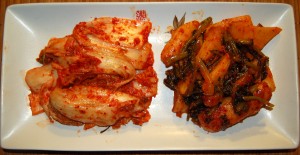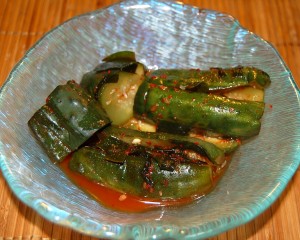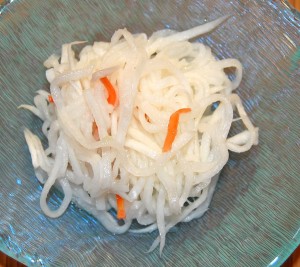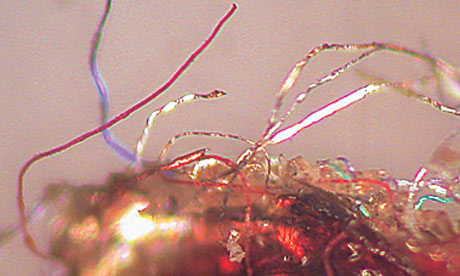Jacqueline wrote us in late March asking for tips for osteoarthritis.
She had experienced continuous pain and stiffness in her thumbs for the last year, and occasional pain when gardening for more than 10 years. Her younger sister also has joint pain and can’t turn her neck. Her father, now 73, has had pain in his thumbs for decades which eventually spread to his fingers, and a shoulder spur which had required surgery. Jacqueline’s dad says that osteoarthritis “runs in the family.”
Of course, even if there is some sort of genetic basis for osteoarthritis, it will be modifiable through diet and nutrition.
Jacqueline had been eating low-carb since 2003: meat and vegetables for dinner, fruit and yogurt or eggs, bacon, and sausage for breakfast, but an occasional sandwich for lunch. Around 2007, Fitday gave her macronutrient ratios as near 65% fat, 17% carb, 17% protein. In 2009 she gave up wheat entirely. At that point she developed dry eyes.
Upon reading our “low-carb dangers” series which discussed dry eyes (see Dangers of Zero-Carb Diets, II: Mucus Deficiency and Gastrointestinal Cancers, Nov 15, 2010), she decided to add some carbs back to her diet. Potatoes and bananas cured her dry eyes.
But the joint pain remained, and she asked for any further suggestions. My reply was:
Shou-Ching had a condition like that and it got better with regular vitamin K2 supplementation. Presumably it was caused by improper calcification. Magnesium, vitamin D, and vitamin C are the next most likely to be important.
I think malnutrition is probably the major cause of osteoarthritis. (We know it can cause it in moose!)
For rheumatoid arthritis the cause is usually infectious. Low-dose antibiotics, as suggested by the Road Back Foundation, often work.
The dry eye indicates a glucose and/or vitamin C deficiency. Either will contribute to joint problems too, since the joint lubricants are all made from essentially the same materials as tear lubricants / mucus. So it’s good you’ve re-introduced starch, but I would add more than just some potatoes and tubers. After you’ve gotten used to very low-carb it can be hard to re-orient yourself to the quantities you may need. If glucosamine helps, that suggests you don’t have enough glucose to make your own glucosamine. I would eat more starches and take more C also.
I think you’re probably close and a little more diet experimentation should be able to fix the problem. Rice and vitamin K2 are probably your best friends.
Jacqueline implemented that advice. She wrote back in early May:
What I did:
I kept on taking the 1.5g glucosamine daily and tried, really tried to up my carbs (as starch) intake – you’re right, once you get used to not eating them, it can be quite hard to do. I seem to have succeeded somewhat as I have gone back to using Fitday a bit and have managed (on the days I was checking) about 100g carbs a day. If I didn’t manage with the carbs, I consciously tried to eat a bit more protein on the day instead.
I have increased the frequency with which I take magnesium and vitamin K2 … and started taking a vitamin C (1g) every day. I’m easing off on vitamin D though as summer and some sunshine is finally here. I’ve also pretty much stopped the fish oil – this is of course related to your recent posts – because I do eat oily fish weekly and other fish and seafood regularly….
I have also cut out my addiction to cashew nuts since I was in Paris for a few days before Easter….
Results:
The aching and stiffness has been receding steadily. The right thumb was already improving with my trying to increase carbs (because of the dry eyes) and taking the glucosamine. The right thumb now feels pretty much back to normal. The left thumb has also stopped aching especially over the last 2-3 weeks although it is still a bit prone to ‘catching’ with sudden pain – and a sort of pulling in the ligaments – as if it can’t react quickly enough to a sudden move e.g. when driving. I am now – over the last few days – playing the piano a lot more (got a bit out of practice with the Paris trip etc.) – and my thumbs are recovering well – not sore the next day like they were before.
Conclusion
There are basically three kinds of arthritis:
- osteoarthritis, which I associate with nutrient deficiencies, is a loss of cartilage and lubricating fluid in the joints, or an improper calcification or ossification of the soft tissue;
- reactive arthritis, which is due to infections; and
- rheumatoid arthritis, which is an autoimmune disorder but the autoimmunity is usually caused by an infection and clearing the infection will usually clear the autoimmunity.
Food toxins can also collect in the joints and cause immune reactions that produce arthritis-like joint symptoms. Foods that frequently cause allergies, such as tree nuts, may be worth eliminating as a test, as Jacqueline eliminated cashew nuts.
Since diagnosing the cause of arthritis symptoms is an art more than a science, and nutrient deficiencies are easily remedied, they’re almost always a good place to start with any joint pain and stiffness.
I’m glad they’re working for Jacqueline! It’s nice when the easy fixes work.






















Recent Comments